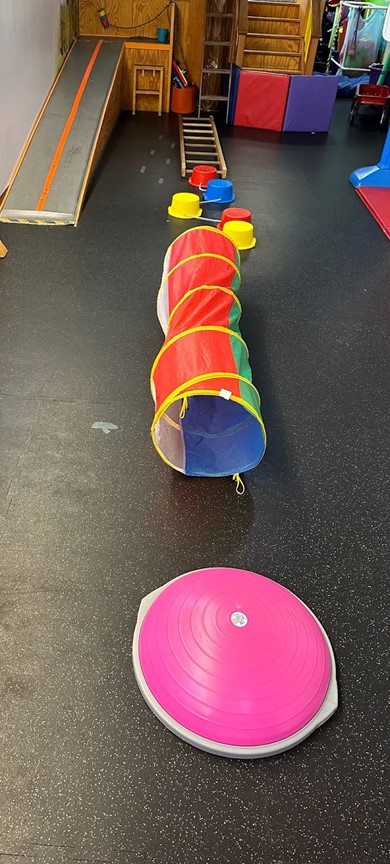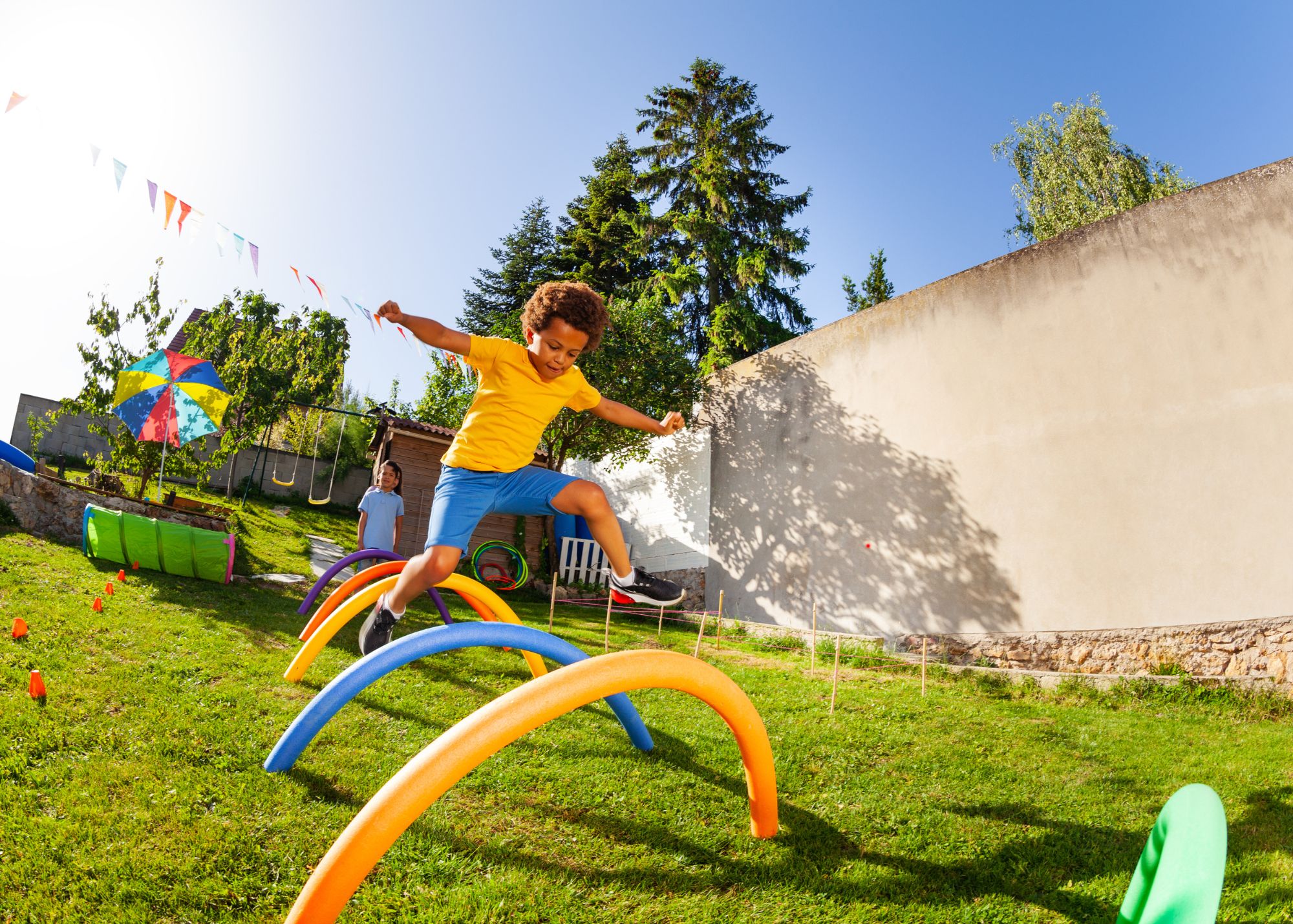The Hidden Benefits of Obstacle Courses
Crafting an obstacle course for children extends beyond mere entertainment; it serves as a dynamic tool for fostering various skills essential for their development. Explore this guide on the benefits of obstacle courses, along with the best methods on how to create one that maximizes learning and fun!
Skills Addressed by Obstacle Courses:
Speech and Language
Obstacle courses are a great way to target tons of language! You can work on everything from spatial concepts to labeling/identifying. Below are fun ways to target your child’s speech and language development with an obstacle course.
-
- Spatial concepts: under, next to, left, right, between, up, down, on, off, and more!
- Labels/Identifying: this is a great chance to have your little one practice names for common items around your home. You can even place their toys “hidden” throughout the course for motivation.
- Is your young one working on a specific sound? Have your child practice their target words before moving on to the next step!
- Label actions: integrate gross motor movements where your child has to THROW, KICK, JUMP, etc.!
- Follow directions: have your child help build and practice following one or two step directions as you tell them to “put on”, “bring _x_”, “take off”, etc.
Balance
In the clinic, we use equipment such as balance beams and stepping stones to target balance. Additional activities include hopscotch, yoga/stretches, standing on a Bosu ball, and imaginative play like pretending to be a flamingo! While you’re running errands with your kiddo, see if they can walk on the curb while holding your hand.
Balance is influenced by multiple factors including vision, the vestibular system, and core control.
Coordination
This is how smooth and fluid our movements are. Coordination is targeted by activities such as climbing up ladders, marching through a ladder placed on the floor, jumping jacks, and animal walks.
Motor Planning
Our brain has to figure out how to tell our body what to do! This can be tricky when learning how to move in a new way, but it helps our brain grow.
Proprioceptive Input
Proprioception is our body’s awareness of its position in space, with messages going to our joints and muscles. Having this input helps calm our nervous system down so we can regulate. Any activity that requires pushing, pulling, weight-bearing, or carrying something heavy can all target this. Items and activities in our clinic that we use for this include:
-
- animal walks (walking on all fours like a bear requires us to *bear* weight through both arms and legs at the same time);
- crawling through a tunnel
- removing 3-5 pound weighted balls from a bucket at the start of the course to carry it 5-10 feet to the end of the course
- pulling on a rope to propel forward while sitting on a scooter board. At home, you can have your little one push or help carry a full laundry basket.
Sustained Attention
Setting up obstacles with the instruction to complete 2-5 repetitions of the whole course can address holding their attention for the entire required time. It can be easy to become distracted by other things in our environment, so participating in consecutive sets in a row can challenge and improve their sustained attention- a skill they will need for school.
Sequencing
This requires completing each step of the course in order from start to finish. Sometimes we may want to jump ahead straight to the end! This skill translates to other activities that require sequencing multiple steps in order, such as washing our hands (turn the water on, wet hands, get soap, rub, rinse, water off, dry).
Frustration Tolerance
Doing something new and challenging can be frustrating. Providing an obstacle course that may be perceived as difficult can help kids work through frustration and build self-esteem and confidence. It’s important to make the course just difficult enough to challenge them in a positive way without overwhelming them.
Check out this video for ideas on building your own at home obstacle course – https://youtu.be/lCYBkNht_j8
If you’re concerned about your child’s development, don’t hesitate to reach out to Kids Place Pediatric Therapy in Arizona. We’ll create obstacle courses similar to this one!








